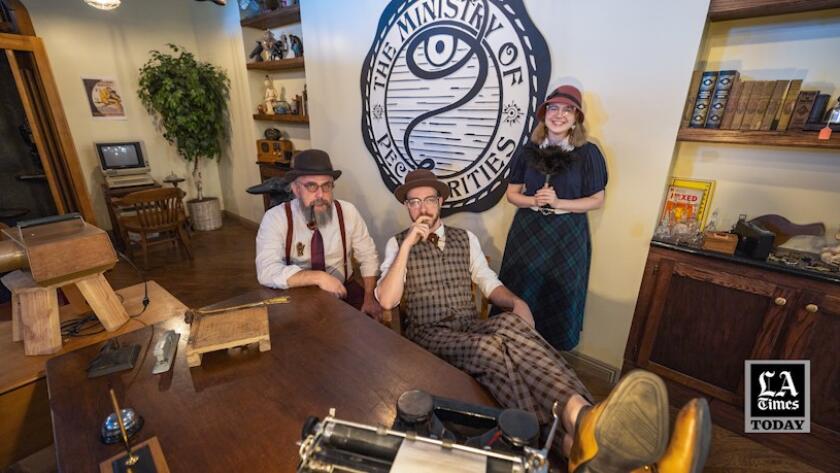The lights are turned off. Smartphone flashlights are forbidden. You’re instructed to walk down a hall, arriving at the entryway to a home. Through set dressing, we are transported to a rickety porch. And then she appears like an apparition.
The Ministry of Peculiarities is an escape room on paper, but it starts and unfolds like a ghost story. The woman standing before us doesn’t give us rules; instead, she starts spinning a tale. A mystery of a dysfunctional family unfolds, and our mission is not to escape but to learn and uncover why this spirit, Dolores (played by actor Emma Kuhn), has been trapped and left behind on this mortal plane.
The character Dolores, played by Emma Kuhn, places her hands in a peculiar position. (Allen J. Schaben / Los Angeles Times)
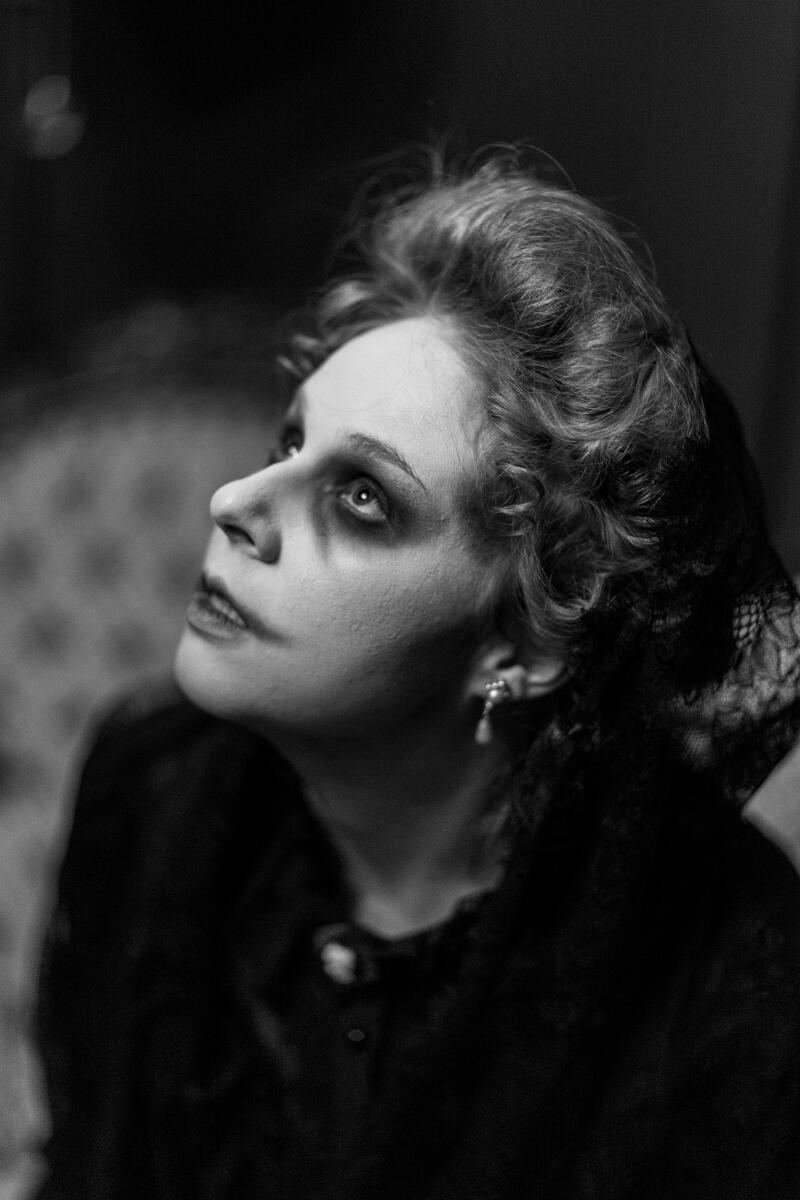
The character Dolores, played by Emma Kuhn. (Allen J. Schaben / Los Angeles Times)
Her ghostly existence is not one conducive to capitalism. In a strained housing market, her presence is hurting the home’s value. The startling sensation, then, is not one of cracking puzzles but of embarking on a research mission.
Throughout the experience, the Ministry of Peculiarities triggers theme park-like effects, as stumbling upon a solution will bring to life black-and-white family history film reels. Previously hidden screens will suddenly materialize in mirror wall fixtures, and rooms will start to feel as if they are alive. In one, picture frames talk to us. The frames are none too pleased with their current placements on the dining room wall, and they make it clear what they think of the person enshrined next to them.
Occasionally, your group will be divided, communicating only by a makeshift dumbwaiter in the byzantine rooms that create the sensation of being in a maze-like mansion. And the ghost that set us off on our journey will unsettlingly and surprisingly appear throughout, each emergence more disturbing than the last but also an indication that we are on the right track to cracking the mystery.
Think of the Ministry of Peculiarities as part escape room and part theatrical production, one that borders on immersive theater. Tucked inauspiciously in an Azusa strip mall and hidden behind pillars advertising a billiards room, the real-world setting for the show helps sell the idea that something not quite above board is about to occur.
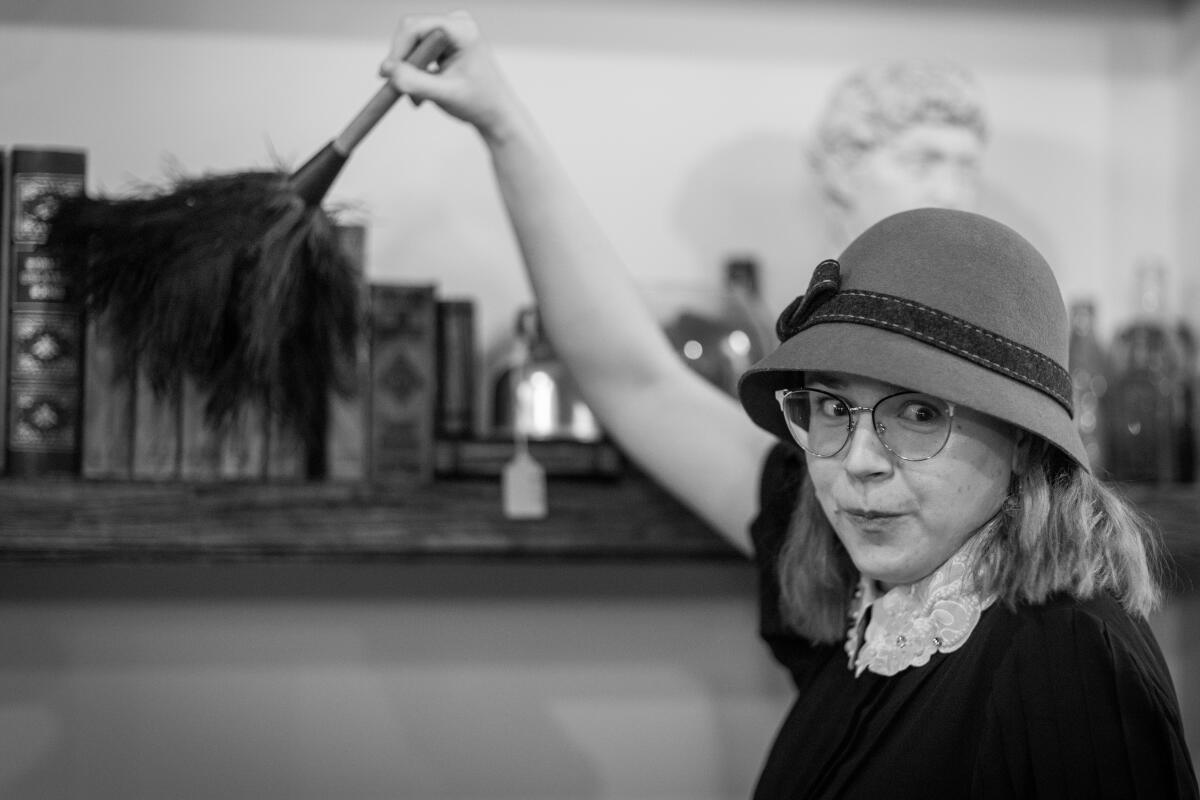
Nina Chatman, who plays Alice, at the Ministry of Peculiarities.
(Allen J. Schaben / Los Angeles Times)
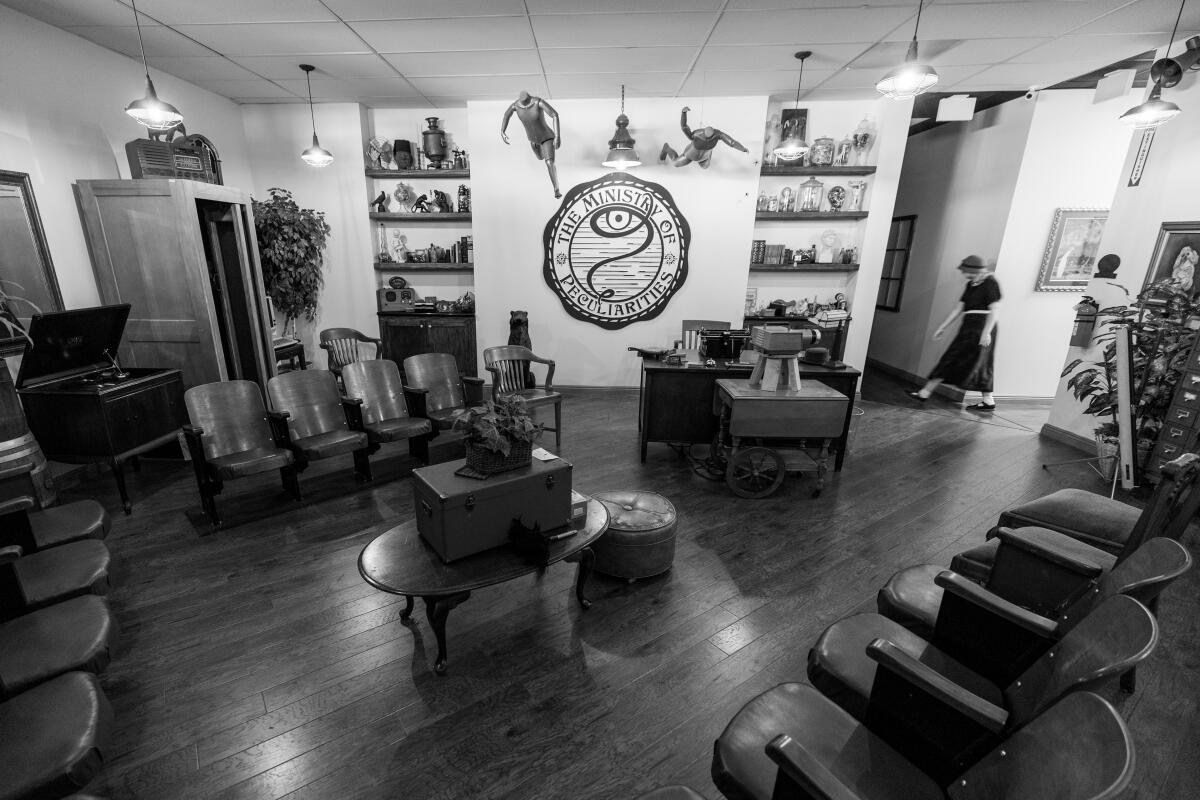
Nina Chatman walks down the hall at the entrance to the Ministry of Peculiarities.
(Allen J. Schaben / Los Angeles Times)
The conceit is that we are set off on a fact-finding expedition by a bumbling paranormal investigation firm, and each room we uncover helps sell the idea that we are further descending into the unknown by upping the interactivity and the tension. But in a twist for an escape room, there is no clock and no real way to lose. Instead, the Ministry of Peculiarities is as much a narrative as it is a game.
“There are a decent number of escape rooms that utilize actors, and some even do it fairly well. The Ministry is particularly good as a creative team of building a world with people in it,” says Noah Nelson, founder of immersive theater site No Proscenium and the architect of the Next Stage, a yearly immersive summit. “They dial in tone and story in a way that makes you really feel like you’re playing with the characters — both physically present and otherwise — rather than being played with by the game master. That’s rare.”
It wasn’t, say its creators, designed to be scary. For as ghostly as its set-up is — darkened rooms of family history busts and photos, cases of would-be poison liquids — the Ministry of Peculiarities flirts with absurdity. As we learn more about a deadly family history, we also uncover tales of pettiness and superficiality. One dining room puzzle in particular, in which paintings on a wall will appear to speak to us, has multiple solutions. It is less about creating the perfect brainteaser and more about showcasing a flawed family with outsize personalities.
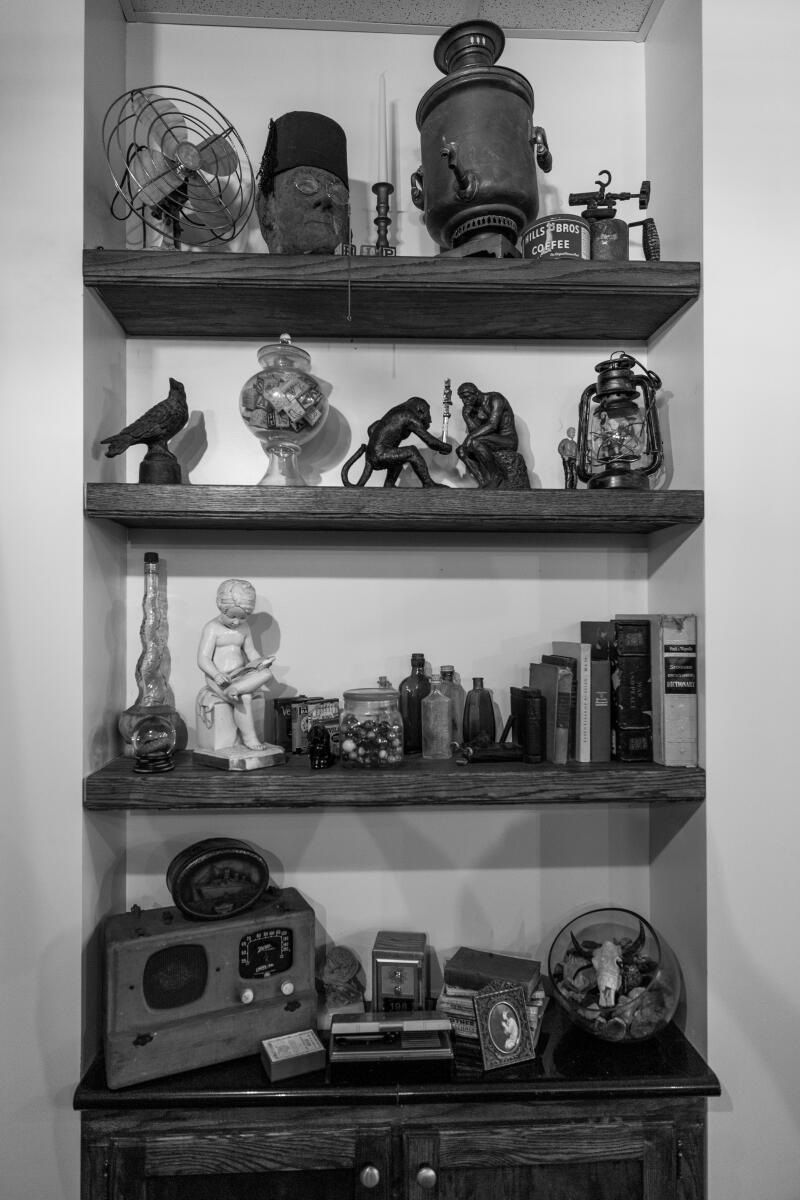
A view of antiques on display at the Ministry of Peculiarities. (Allen J. Schaben / Los Angeles Times)
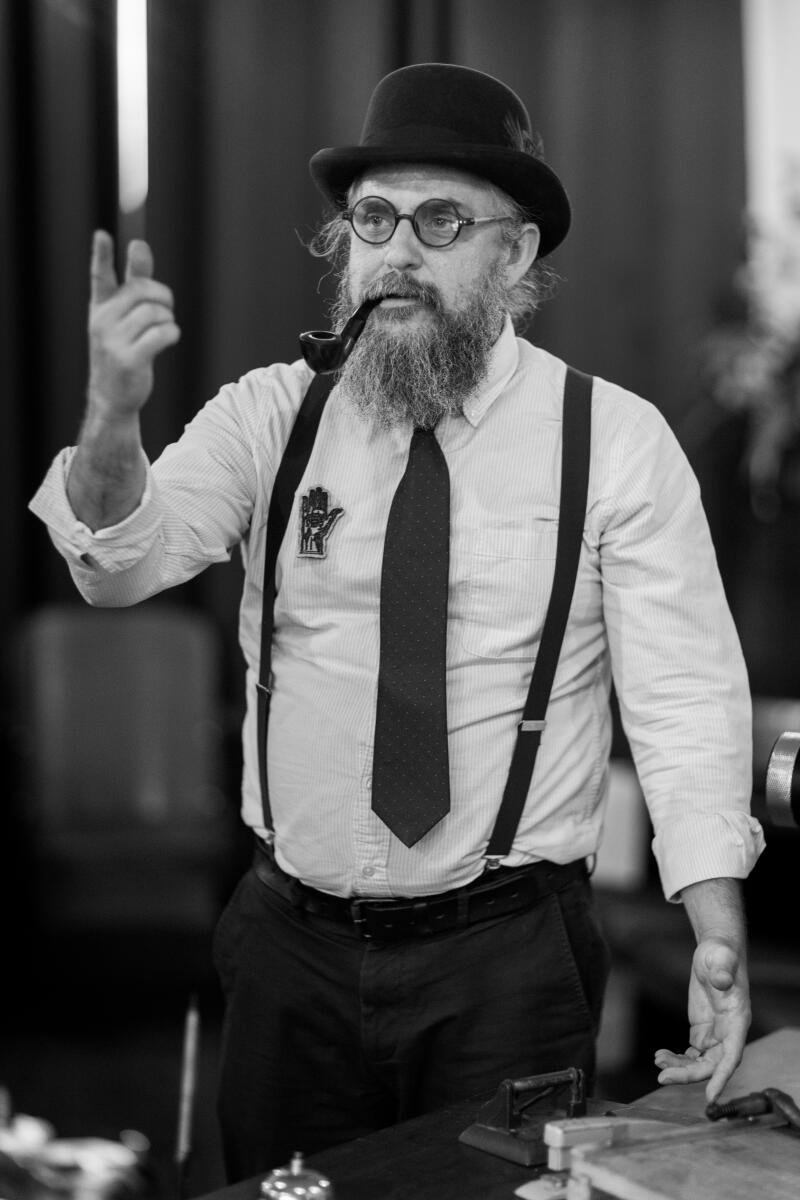
Jonathan Berk co-founded the Ministry of Peculiarities and plays the character Stephen. (Allen J. Schaben / Los Angeles Times)
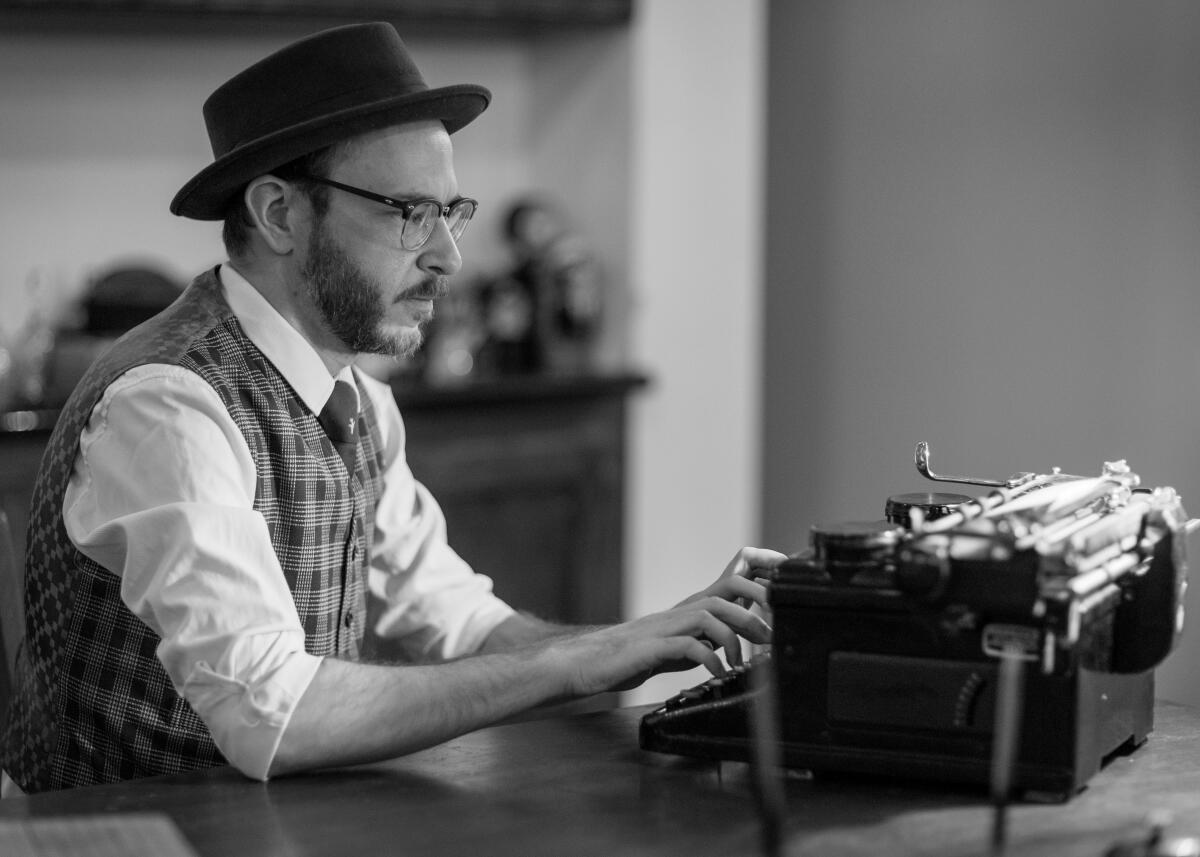
Co-founder Benjamin Berk, who plays Higgins, at The Ministry of Peculiarities.
(Allen J. Schaben / Los Angeles Times)
Tonally, the Ministry of Peculiarities is similar in spirit to Disneyland’s Haunted Mansion, where a set-up that we’re trapped in a ghost-filled residence soon becomes a story of revelry-filled illusions. Special effects in the Ministry of Peculiarities are of the more do-it-yourself variety, but no less effective, as the foreboding atmosphere and narrative beats that set off audio and visual cues make us feel as if we are in the presence of something otherworldly.
Clues, for instance, are delivered in character and in story. When struggling to organize a mini suitcase of poison, I knew I was on the wrong track because I was admonished for not understanding the personality of one of the family members.
“Seeing some of the dysfunction in our families is what inspired me at the start to write the story. Not to say what happens mirrors anything that happens in either of our families, but that was the inspiration,” says co-founder Jonathan Berk, who founded the Ministry of Peculiarities with his brother Benjamin and close family friend Adam Moody. All are in their mid-30s or early 40s.
“Just like the ridiculousness and pettiness that some of the things that happen in family situations. The dining room is a great example of that, with paintings refusing to hang next to each other. It gave us the opportunity to hit our tone, which is kind of a combination of creepy and ridiculousness.”
Ultimately, it all creates a sense of intimacy. Puzzles spring from family heirlooms or pieces of clothing rather than story-removing coded messages. While many of the best escape rooms have elaborate sets and an underlying plot to get the events into motion, melding story with game-like quests remains a challenge.
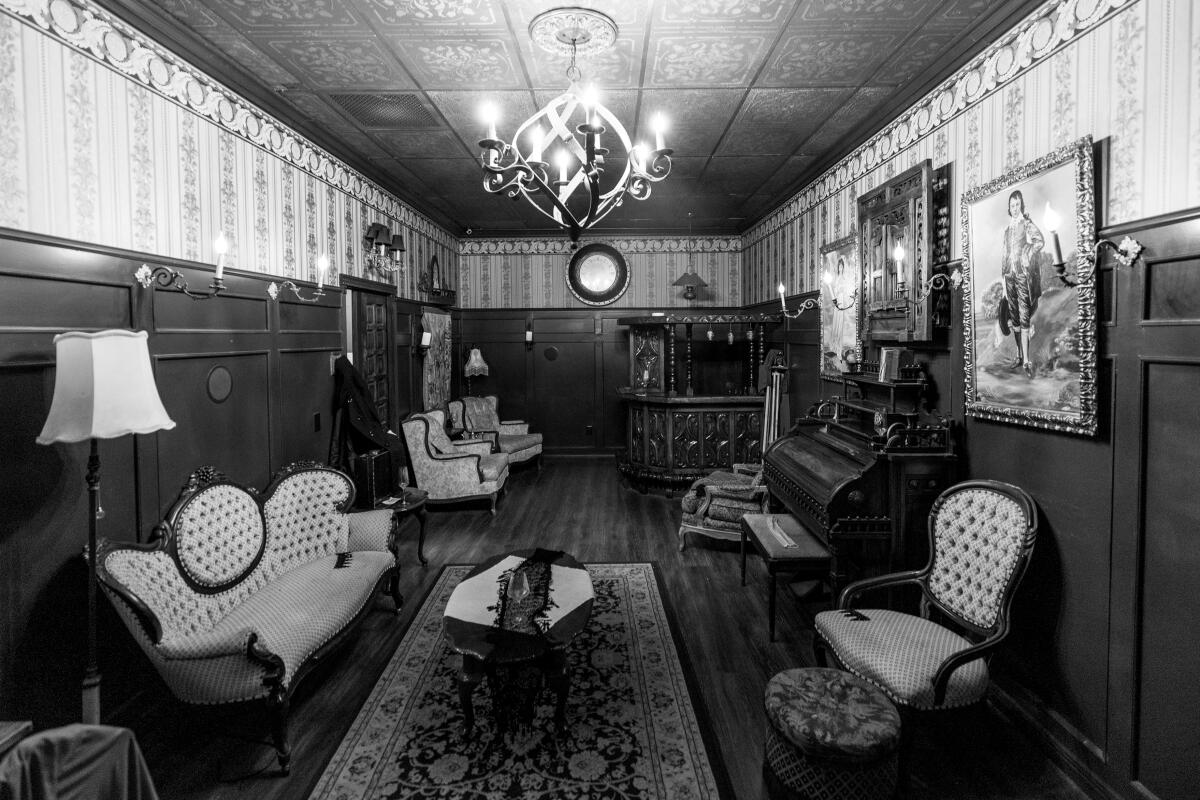
A view of one of many rooms at the Ministry of Peculiarities.
(Allen J. Schaben / Los Angeles Times)
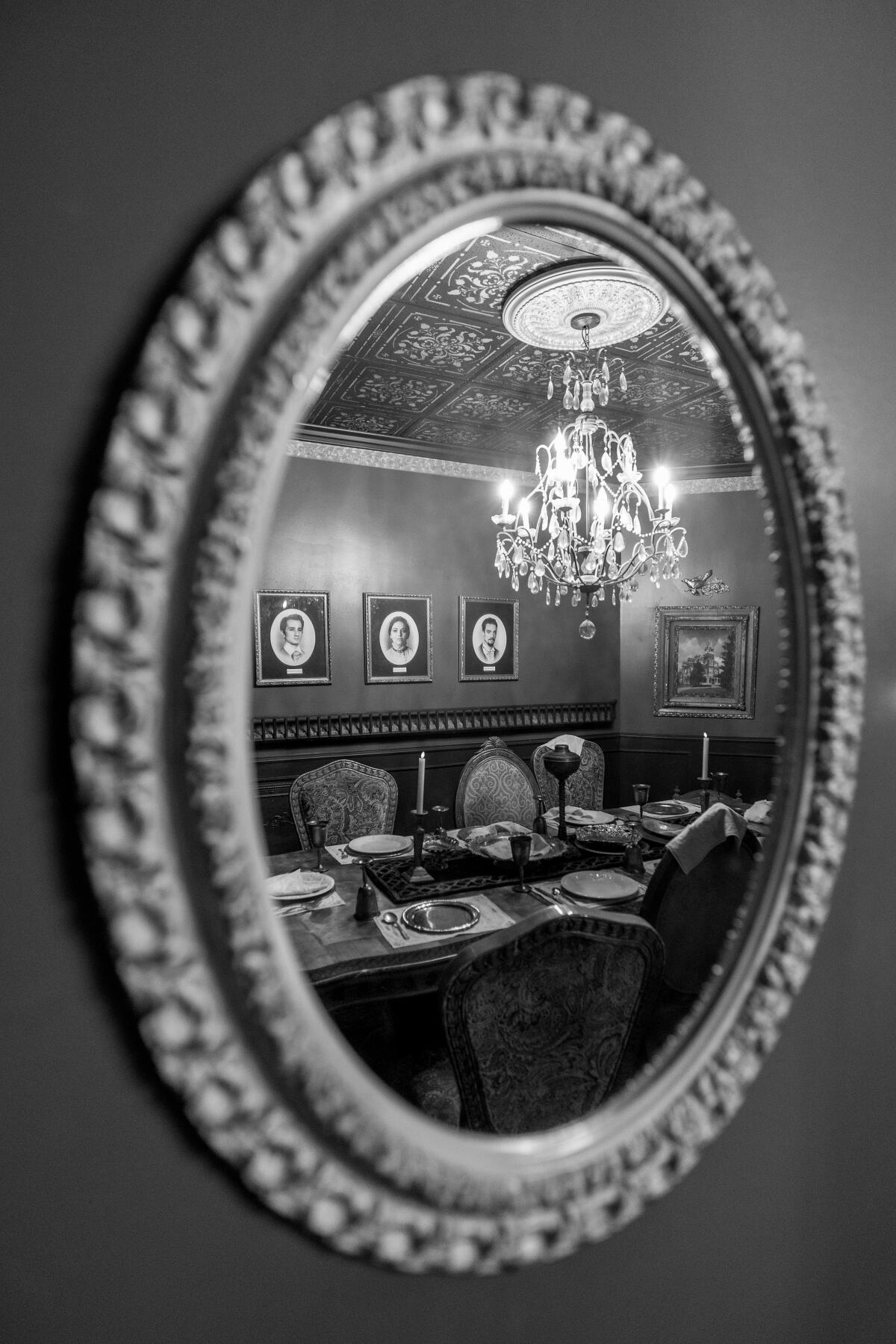
A mirror at the Ministry of Peculiarities reflects the view of a room.
(Allen J. Schaben / Los Angeles Times)
That’s why, in part, creators removed a staple of the industry from the experience: the clock. By ridding the game of a time-focused rigidity, we can linger with a puzzle or an object. It creates the sensation that we’re getting to know characters rather than simply solving a challenge.
“I want to see the result of a story or the result of a conflict,” says Moody. “We’ve all had this feeling about whether or not we’re going to succeed about midway through an escape room. Getting to the end and knowing you’re failing and also not knowing the ending of the story, whether it was compelling or not, was definitely one of our pet peeves of the industry.”
It all started back in 2017, when after years of discussing ways to merge escape rooms and immersive theater, the three built a makeshift haunted house in Moody’s Rancho Cucamonga home. “It was a small, little haunt, but it was escape room-centric,” says Moody. “But doing something so quick and off-the-cuff gave us the confidence.”
By late 2021, the Ministry of Peculiarities was a reality in Azusa. The room, largely self-funded with the assistance of a small business loan, runs most Wednesdays through Sundays and is geared for groups as small as four but can scale to 12. Two other rooms are in the works, with the hope of someday running three rooms out of the Azusa space. They’ll need to get some more people through the door first.
“We are pretty deep into the second experience, but the build-out hasn’t happened yet,” Moody says. “Financially, I wish things were a lot easier on us.” He notes that the bar to enter the space is becoming increasingly higher, as guests regularly expect escape rooms with high production values.
For now, the sweet spot is probably six or seven participants for the Ministry of Peculiarities’ debut experience. One room will have multiple party members working simultaneously on a series of puzzles that dig into the family’s history. Someone, for instance, may be arranging wine glasses, while another group member will be looking for missing pieces of one family member’s signature outfit. Key, though, is each solution results in a recorded or live performance that pulls the group back together.
The Ministry of Peculiarities wanted to ensure that one person didn’t become the sole puzzle solver. They also sought to concoct a way for those who wanted to stand back to enjoy the narrative. In the years before launching the Ministry of Peculiarities, the group estimates they took part in at least 100 escape rooms and wanted to correct what they say as two main criticisms. “I hate failing escape rooms,” says Jonathan. “And I hate not seeing content, even if I’m not the puzzle solver. I at least want to know what happened.”
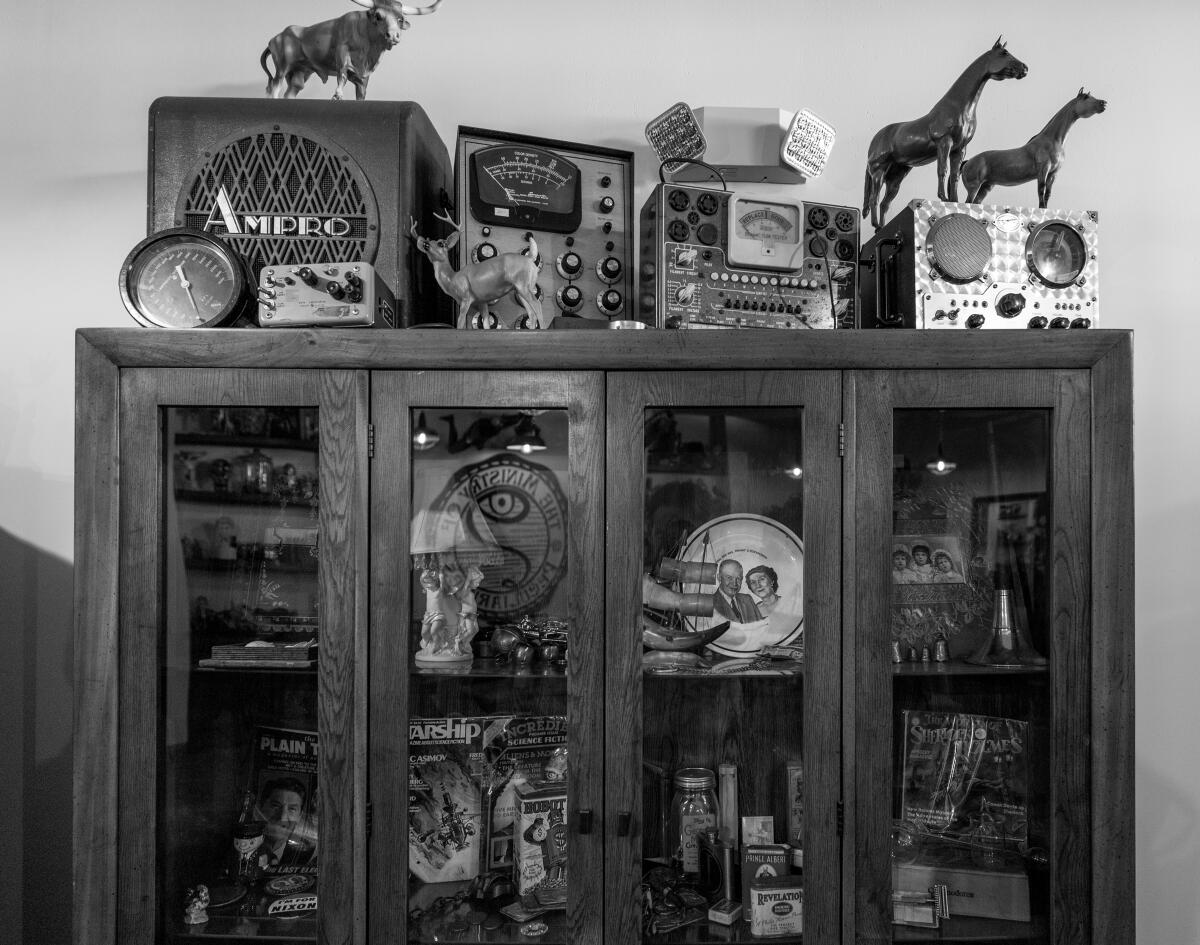
A view of antiques on display at the Ministry of Peculiarities.
(Allen J. Schaben / Los Angeles Times)
No Proscenium’s Nelson says the Ministry of Peculiarities doesn’t upend escape room conventions so much as set them off-center. While the experience isn’t timed in a traditional sense, expect to spend about 90 minutes in the room, and there will be some in-character prodding or hints if a group is running behind.
“Your experience is timed but not in a pass-fail sense,” Nelson says. “Just that you have so much time to stay in the sandbox and get as much story out of it as you can wring. Pretty much no matter what you feel like, there’s more to the world than what you found, but what you found is your story, and that’s satisfying on its own.”
It’s the goal, after all, of successful game design: to feel as if you are the one creating the story, no matter how linear or scripted it may be.
The Ministry of Peculiarities
Watch L.A. Times Today at 7 p.m. on Spectrum News 1 on Channel 1 or live stream on the Spectrum News App. Palos Verdes Peninsula and Orange County viewers can watch on Cox Systems on channel 99.



